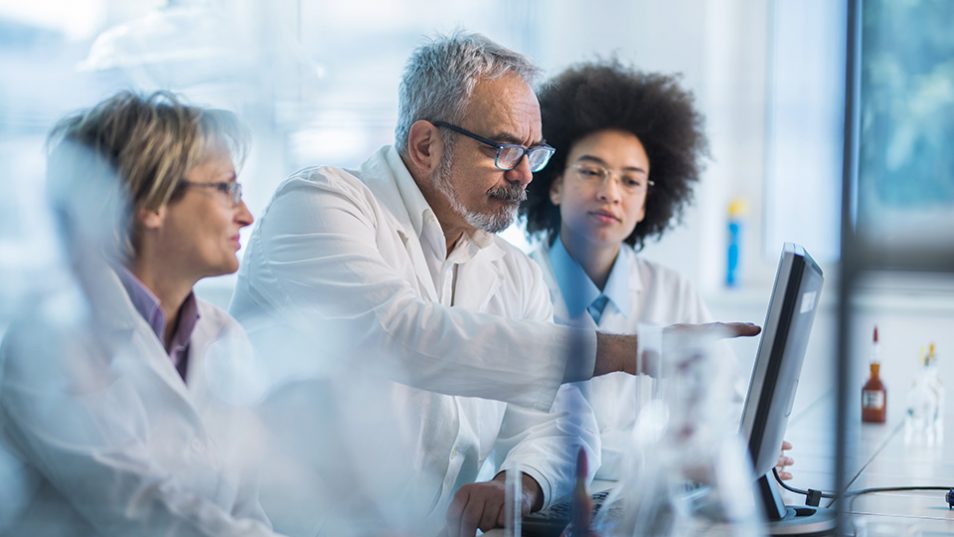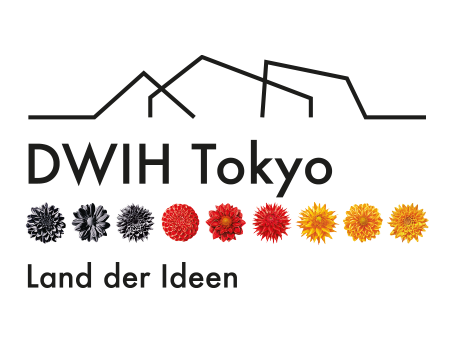DFG to Fund 13 New Collaborative Research Centres
 © iStock
© iStock
The Deutsche Forschungsgemeinschaft (DFG, German Research Foundation) is establishing 13 new Collaborative Research Centres (CRC) to further support top-level research in German universities. This was decided by the responsible Grants Committee in Bonn. The new CRCs will receive a total of approximately €166 million in funding for an initial four-year period as of 1 January 2023. This includes a 22 percent programme allowance for indirect project costs. Five of the new networks set up are CRC/Transregios, spread across multiple applicant universities.
Topics range from microbial networks to rare earth metals and plant health / €166 million in funding for an initial four-year period / Two packages of transfer projects
In addition to the establishment of the13 new groups, the Grants Committee also approved the extension of another 13 existing CRCs for an additional funding period, including five CRC/Transregios. Collaborative Research Centres allow researchers to pursue innovative, challenging and long-term research projects as a group, thereby supporting the further development of core areas and structures at the applicant universities. From July 2023, the DFG will be funding a total of 279 CRCs.
The new Collaborative Research Centres in detail
(in alphabetical order by their host university, including the names of spokespersons and additional applicant universities):
Within pure mathematics, the CRC/Transregio Integral Structures in Geometry and Representation Theory will be working on several areas that are normally researched separately: combinatorics, algebraic geometry, number theory and representation theory are to be considered in a creative way across the disciplines. In the process, the integral structures mentioned in the title of the CRC form the overarching umbrella which will unite the various studies. In addition to working on mathematical questions, fundamental new methods are to be developed, too. (University of Bielefeld, Spokesperson: Professor Dr. Kai-Uwe Bux; also applying: University of Paderborn)
Electrically conductive ceramic materials have a wide range of properties and are increasingly used in energy conversion, storage or electronics. The Collaborative Research Centre FLAIR – Fermi Level Engineering Applied to Oxide Electroceramics will now focus on so-called Fermi Level Engineering – an established concept in semiconductor physics for changing material properties through chemical substitution – and tap into its potential for the production and functionalisation of novel oxide ceramics with desired physical and chemical properties. (TU Darmstadt, Spokesperson: Professor Dr. Andreas Klein)
The Collaborative Research Centre Microbial networking – from organelles to cross-kingdom communities will seek to gain a better understanding of the evolution of organelles and the spatial structure and dynamics of microbial networks and of central metabolic pathways. To this end, it will analyse microbial communities from the level of intracellular interactions between organelles or endosymbionts and their host cell to intercellular relationships in microbial networks. In this way, it aims to provide fundamental scientific insights that will enable the targeted manipulation of microbial interactions in the future, something that is of great importance in the search for solutions in the areas of healthcare, nutrition and ecosystems. (University of Düsseldorf, Spokesperson: Professor Dr. Michael Feldbrügge)
The central nervous system is the most complex organ system in human beings. Many fundamental processes and diseases related to it are still not fully understood. Only recently have researchers discovered the significant contribution of mechanical stimuli in this context: the Collaborative Research Centre Exploring Brain Mechanics (EBM): Understanding, engineering and exploiting mechanical properties and signals in central nervous system development, physiology and pathology will now be dedicated to investigating these. By combining natural sciences and life sciences, the group aims to provide key impulses for the research field of brain mechanics, thereby contributing to a deeper understanding of neurological processes of the central nervous system and finding points of departure for therapeutic options. (University of Erlangen-Nuremberg, Spokesperson: Professor Dr.-Ing. Paul Steinmann)
How does the immune system develop in the womb? And what effects does birth – and therefore physical separation from the mother – have on the newborn baby’s immune system? The CRC/Transregio Perinatal Development of Immune Cell Topology (PILOT) aims to answer these questions comprehensively by analysing how immune cells form during pregnancy and birth, i.e. perinatally. The goal is to clarify how programmed developmental lineages and exogenous influences interact to ensure immune cell differentiation and local immune balance. To this end, the researchers will focus particularly on “borderline tissue” such as the intestine, lungs, skin and placenta so as to gain fresh insights into the immune system. (University of Freiburg, Spokesperson: Professor Dr. Philipp Henneke; also applying: Ludwig Maximilian University of Munich)
Gene expression involves several steps to convert the genetic information in DNA into proteins as tools of the cell. On the one hand, the individual processes occur at separate times and to some extent at separate locations, while on the other hand they form a poorly understood network with various strategic control points. The Collaborative Research Centre Molecular mechanisms and interplay of gene expression processes aims to take a closer look at the multifaceted interplay between individual gene expression processes, something that has not yet been investigated. In this way, common principles of biological processes are to be identified and described in more detail. The group will seek to improve our understanding of the underlying regulatory mechanisms. (University of Göttingen, Spokesperson: Professor Dr. Markus T. Bohnsack)
Research into the chemistry of molecular and nanoscale rare earth compounds and their physical properties is the focus of the Collaborative Research Centre 4f for Future. Macromolecular and low-molecular materials based on such rare earth metals are crucial to numerous applications, for example as permanent magnets or in screens. Since very few methods are available for rare earth compounds due to the complexity of the electron structure, the group will seek to advance the theoretical development of methods in this field. At the same time, complex chemical compounds are to be produced in experiments. (KIT Karlsruhe, Spokesperson: Professor Dr. Peter Roesky)
How the polymeric character of macromolecules such as DNA, RNA or proteins and their mutual interactions influence the processes in the cell and their functional properties is to be analysed by the Collaborative Research Centre Polymer Concepts in Cellular Function. In this way, a conceptual framework will be established for the description of cellular processes driven by the interaction of biopolymers. To this end, the group will combine perspectives from molecular biology and polymer science, thereby aiming to close a gap in the current understanding of cell functions in the longer term. In particular, the interplay of nucleic acid-protein interactions in transcriptional and translational control will be investigated. (University of Mainz, Spokesperson: Professor Dr. Edward A. Lemke)
Regulatory T cells (or “Tregs” for short) are a specialised subgroup of T cells that regulate the immune response. If they do not function properly, autoimmune diseases and chronic inflammation occur, potentially even tumour formation. The CRC/Transregio Heterogeneity and functional specialization of regulatory T cells in distinct microenvironments aims to investigate Tregs in different tissues and functions based on identification and mechanistic approaches. The aim is to develop Treg-directed interventional strategies to restore immune homeostasis and promote tissue regeneration and remodelling. (University of Mainz, Spokesperson: Professor Dr. Ari Waisman; also applying: Ludwig Maximilian University of Munich, TU Munich)
The CRC/Transregio Mathematics of Many-Body Quantum Systems and Their Collective Phenomena will focus on the mathematical analysis of models from condensed matter physics. Diese Modelle beschreiben das kollektive Verhalten einer großen Anzahl von wechselwirkenden Komponenten wie Teilchen oder Spins. These models describe the collective behaviour of a large number of interacting components such as particles or spins. While the equations describing microscopic quantum models are largely understood, the derivation of collective phenomena at the mesoscopic and macroscopic level still comes up against mathematical limits. The group will seek to address such mathematical questions associated with many-particle quantum systems. (Ludwig Maximilian University of Munich, Spokesperson: Professor Dr. Christian Hainzl; also applying: TU Munich, University of Tübingen)
The interaction between plants and microbes is a crucial factor in plant health. For this reason, the CRC/Transregio Genetic diversity shaping biotic interactions of plants (PlantMicrobe) will seek to investigate a range of fundamental research questions that shed light on all facets of plant-microbe interactions, looking at both symbiosis and pathogenesis. At the interface between plant sciences and microbiology, modern approaches from biochemistry, genetics and comparative omics analyses are to be used to gain insights that will contribute in the long term to improving plant health – and therefore plant productivity – based on the optimum use of natural mechanisms. (Ludwig Maximilian University of Munich, Spokesperson: Professor Dr. Martin Parniske; also applying: TU Munich, University of Tübingen)
Life depends on the ability to adapt to changing environmental conditions. To this end, organisms have sophisticated mechanisms for regulating protein functions in time and space. The Collaborative Research Centre Functional Plasticity encoded by Cellular Membrane Networks will analyse how membrane systems react and adapt to external stimuli in molecular interplay and which fundamental principles underlie these processes. In doing so, it will address a central question of basic biological research and the understanding of diseases. (University of Osnabrück, Spokesperson: Professor Dr. Christian Ungermann)
New pandemic pathogens such as SARS-CoV-2 continue to emerge around the world and have a significant impact on our healthcare systems. At the same time, antimicrobial resistance is increasing. At the same time, antimicrobial resistance is increasing. For this reason, there is a constant need to develop new classes of antimicrobial agents. Instead of antimicrobial agents, therefore, the Collaborative Research Centre Decisions in Infectious Diseases (DECIDE) aims to develop new therapeutic approaches that focus on the host response triggered by pathogens. Too little research has been done in this area to date, but such an approach could be superior to the antimicrobial therapy that is mainly used at the moment. (University of Würzburg, Spokesperson: Professor Dr. Thomas Rudel)
In addition to these 13 new Collaborative Research Centres, the Grants Committee also approved two larger packages of transfer projects: these were each submitted by a Collaborative Research Centre and are unique to date in terms of their scale.
Since 2011, the CRC Additive Manufacturing at the University of Erlangen-Nuremberg has been dedicated to the production of highly individualised, geometrically complex components using powder-based and beam-based additive processes. Together with an industry consortium made up of nine application partners, six transfer projects have been defined which deal with metal and plastic materials as well as the differing beam sources of laser and electron beam. The DFG will fund these projects from January 2023 onwards.
Meanwhile, the CRC Regeneration of Complex Capital Goods at the University of Hanover was funded from 2010-2021 and was dedicated to complex regeneration processes that are becoming increasingly relevant in particular in connection with the debate surrounding sustainability and resource conservation. The results achieved in this group are now to be further advanced to application in cooperation with various industry partners. To this end, a total of 15 transfer projects will be funded from January 2023 onwards.
In transfer projects, researchers cooperate with commercial companies or non-commercial, non-profit institutions to pursue a joint programme of work with the aim of applying fundamental research findings and outcomes in practice. At the same time, fresh questions and stimuli are to come from the application partner and be fed back into research. Transfer projects can be applied for at any time by a Collaborative Research Centre. The application partners are expected to make an appropriate contribution of their own, as they do not receive any funding from the DFG.
More information: https://www.dfg.de/en/service/press/press_releases/2022/press_release_no_49/index.html
The DWIH Tokyo newsletter provides timely information about open calls and events from research and innovation in Germany and Japan: Click here to register for the newsletter in English
